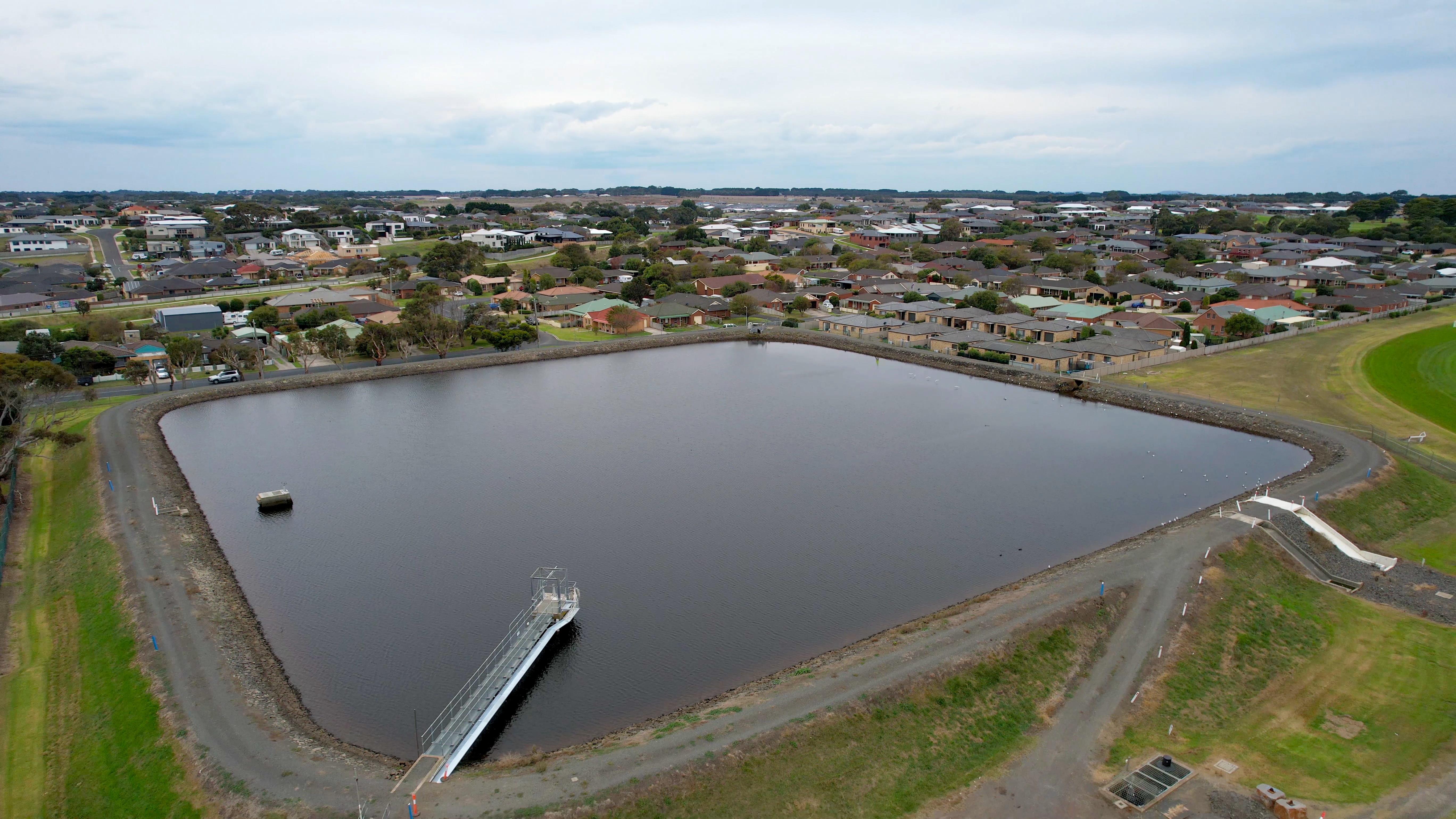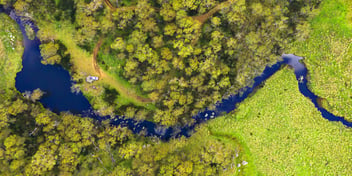Warrnambool rooftop rainwater harvesting system marks record yields

Wannon Water’s innovative rainwater harvesting system set a new record earlier this month, with peak inflows from across the rooftop system reaching 331 litres a second following an intense rain event.
During the eight hours from 4pm to midnight on Sunday 7 January, the system harvested a whopping 2.5 ML of water – enough to supply 17 residential houses for an entire year.
With nearly 90% of Warrnambool’s drinking water currently pumped more than 90 kms from the Otway Ranges, Wannon Water Branch Manager Asset Planning Peter Wilson said the system is helping to reduce reliance on the Otway supply.
“There are huge financial and environmental costs associated with pumping water such a large distance. Energy is a significant operational cost for our business so we've been working hard to reduce our emissions and provide future savings for our customers,” he said.
“The water is extracted from the Gellibrand River. And protecting the environmental flows in that river is also very important.”
The water is collected from the rooftops of some north-east Warrnambool housing estates, sheds at the Gateway Business Park in Horne Road, the sporting precinct at Albert Park, and buildings at Warrnambool College.
The raw water is transferred via a dedicated pipe system to Wannon Water’s Brierly Basin before being transferred to the Warrnambool Water Treatment Plant, where it’s disinfected and added to the city’s drinking water supply.
Wilson said the system is a key augmentation to the utility’s water supply strategy based on the long-term growth projections for Warrnambool's water supply demand.
“We evaluated the cost of augmenting the system and compared other alternatives to that augmentation cost. The roof water harvesting alternative came out at a lower cost,” he said.
“It sold itself as far as the business case went. And that's without taking into account the environmental advantages of reducing urban run-off problems, including high stormwater flows, scouring of waterways and flooding.”
Designing innovation
In terms of how the system was designed, Wannon Water was already placed in good stead from an infrastructure perspective, Wilson said, which certainly helped to keep initial costs low.
“We already had a few of our ducks lined up. Our particular area that we harvest water from is reasonably close to a raw water storage, and it runs downhill by gravity, so the capital cost of implementing it for that particular catchment was relatively low,” he said.
“The initial trial was on an urban housing development, with about 120 houses in one subdivision and about 250 houses in another.
“Before the developer started work, we suggested that a separate pipe be installed on the greenfield site to collect roof water independently of the road runoff and any other ground runoff.
“It’s a completely dedicated pipe that leads from the roof catchment through to our raw water basin. As it runs by gravity, there is no pumping involved, and the pipes were sized such that we could take the peak flow of one of the subdivisions without any detention tanks.
“And for the other subdivision, the system was designed with large underground detention tanks. We decided that if we're going to expand the system in future and make the most of the capacity of that main trunk line, we'd have to reduce the peak flows back to a reasonable level.
“Ultimately, the system is designed around having a detention tank in each of the subdivisions that allow water to be captured in those high rainfall events, but still be harvested over the year.
We've been able to harvest around 95% of the available rooftop water in an average year.”
Wilson said the system has proved itself successful, but there were certainly a couple of hurdles that needed to be overcome during planning.
“Water corporations in Victoria don't have any power over stormwater. That's a council responsibility. We needed to have the local council on board to provide a legal point of discharge for the roof of a house,” he said.
“Navigating the legalities was a challenge, but the council has always been on board with the project. They saw the advantage to their stormwater systems by taking some of that load off the urban catchment and supported the improvement in water sustainability.
“Another challenge has been around developers’ willingness to be involved. We've had a couple of very progressive developers work with us during the pilot, but there've been other developers who have been quite resistant due to the additional costs of installing the pipes needed.
“It's not an enormous cost, but it is a cost. We’re hoping that soon new subdivisions will be required to install roof water harvesting pipes, as occurs for recycled water pipes to subdivisions by some water authorities.”
Expanding the system
The rainwater harvesting system started off as a trial funded in part by the Victorian Government and the Federal Government, but Wilson said the initiative has come a long way since then.
“The system has been operating for over 10 years now. We've expanded it and are planning to expand it further into a new growth corridor. The growth corridor is expected to have around 4500 houses,” he said.
“That means our system is going to grow from around 350 houses at the moment to 4500 houses over the next 20 to 30 years.”
On average, each home connected to the rainwater harvesting system collects 150,000 litres of water each year, which is equivalent to the amount of drinking water they use.
“In effect, we are establishing a growth corridor that has the potential to supply its own drinking water,” Wilson said.
“We've also implemented an industrial roof harvesting scheme in a recent industrial estate and have plans to harvest water from a sporting precinct and a school. We're in the process of hooking up all the roofs to that network at the moment.”
Wilson said he is surprised that there's no other water corporations around Australia that have grabbed hold of this opportunity, too.
“We're the first in Australia and probably the world to implement rainwater harvesting on this scale,” he said.
“Warrnambool is a small place compared to Sydney, Melbourne and other big growth areas. We definitely had our ducks lined up from an infrastructure perspective but there is certainly capacity to fund additional infrastructure when considering larger developments.
“When you’re talking about building new developments with 30,000 houses, the benefits to the environment and customers outweighs the cost of building a water storage or a pump station that may be required. Rainwater harvesting presents a huge and largely untapped opportunity.”

